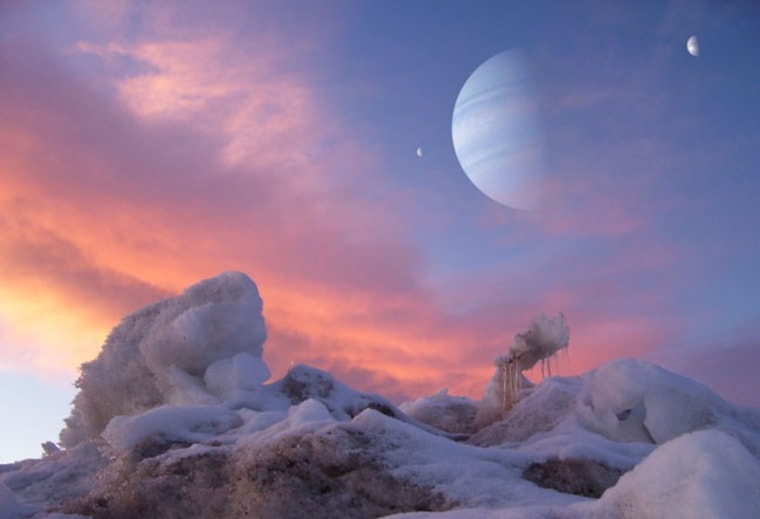NASA's planet-hunting Kepler telescope, which astronomers hope will find Earth-like planets orbiting other stars, might also find habitable moons in other solar systems, new research suggests.
Kepler's primary mission is to monitor thousands of stars looking for characteristic dips in their brightness as orbiting planets pass in front of them in so-called "transit" events.
The orbiting observatory, launched in March, already detected the giant extrasolar planet HAT-P-7b within its first 10 days of taking data. The planet had previously been discovered by ground-based telescopes, but the observations showed Kepler works as expected.
While ground-based observatories, and even some space telescopes, such as Spitzer and Hubble, can find Jupiter-sized extrasolar planets, Kepler is the first telescope aimed at detecting alien worlds closer to the size of our own home planet.
One astronomer suggests that Kepler's capabilities may even be able to detect so-called "exo-moons."
Modeling moons
David Kipping of University College London has already devised a method for detecting exomoons but no-one was sure whether it could really be used with current technology. He and his team have now modeled the properties of the instruments on Kepler, simulating the expected signal strength that a habitable moon would generate.
An exomoon's gravity tugs on the planet it orbits, making the planet wobble during its orbit around its host star. The resulting changes in the position and velocity of the planet should be detectable by Kepler through accurate timing of the transits.
The scientists considered a wide range of possible planetary systems and found that a fluffy Saturn-like planet, which would be low in mass for its size, gives the best possible chance for detecting a moon, rather than a denser Jupiter-like world. This is because planets like Saturn are large – blocking out a lot of light as they pass in front of their star – but very light, meaning they will wobble much more than a heavy planet.
Slideshow 12 photos
Month in Space: January 2014
If the Saturn-like planet is at the right distance from its star, then the temperature will allow liquid water to be stable on any sufficiently large moons in orbit around it. Such water-bearing moons might be habitable for life.
"For the first time, we have demonstrated that potentially habitable moons up to hundreds of light years away may be detected with current instrumentation," Kipping said.
Millions of moons possible
The team found that habitable exomoons down to 0.2 times the mass of the Earth are readily detectable with Kepler.
"As we ran the simulations, even we were surprised that moons as small as one-fifth of the Earth's mass could be spotted," Kipping said.
While it is not known if habitable exomoons are common in the galaxy, the observatory could potentially look for Earth-mass habitable moons around 25,000 stars up to 500 light-years away from the sun. In the whole sky, there should be millions of stars which could be surveyed for habitable exomoons with present technology.
"It seems probable that many thousands, possibly millions, of habitable exomoons exist in the Galaxy and now we can start to look for them," Kipping said.
The team's findings will be detailed later this month in the journal Monthly Notices of the Royal Astronomical Society.

